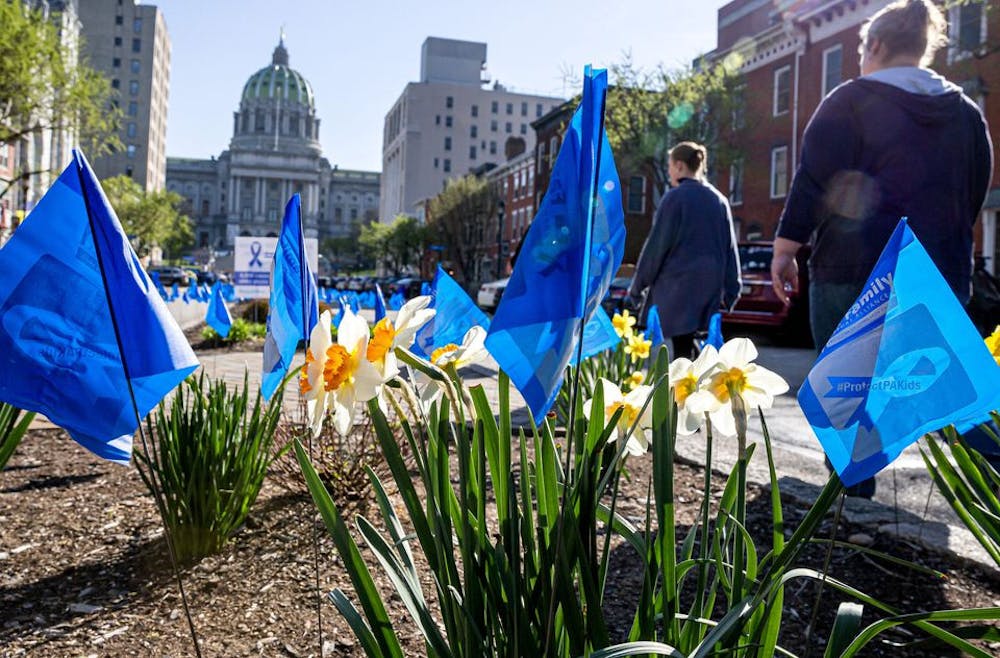Leaders in child abuse advocacy across Indiana are calling for increased awareness for the issues they say go overlooked in commemoration of Child Abuse Prevention Month.
In 2021, approximately 13 of every 1,000 children in Indiana suffered maltreatment, according to a report by the U.S. Department of Health and Human Services. In 2021, 60 children died of abuse or neglect, according to the Indiana Department of Child Services.
State leaders and groups organize prevention efforts
While prevention councils exist in 47 Indiana counties, the goal is for every county to eventually have a council, Jeff Wittman, director of Prevent Child Abuse Indiana, said. There is not currently a council in Monroe County. People who want to create a council can contact Prevent Child Abuse Indiana for help.
The Indiana Department of Child Services hosted a kickoff for Child Abuse Prevention Month at the Indiana Statehouse on April 4. The event, titled “Building Together: Prevention in Partnership,” emphasized the need for communities to work together to prevent abuse and help children thrive.
The national symbol for child abuse prevention is a blue pinwheel, established by Prevent Child Abuse America in 2008. It is meant to symbolize the values of playfulness, joy and childhood every child should have.
[Related: County commissioners suspend CJRC meetings, cite lack of progress]
Organizations around the state have participated in purchasing and placing pinwheels to show support. Indiana University School of Medicine’s Child Protection Divison placed a pinwheel garden with 60 pinwheels outside Riley Hospital for Children in Indianapolis April 3.
Pinwheels can be purchased at Prevent Child Abuse Indiana’s online shop, or community members who want to participate can place a virtual pinwheel.
“We use that as a symbol to kind of start conversations and draw awareness to the fact that child abuse and neglect still is an issue that needs to be dealt with,” Wittman said. “Any child that is hurt or neglected is too many.”
The Villages of Indiana, which provides support to new parents, hosted its annual Matt Breman 5k run/walk April 22 in Indianapolis. The event, named after the former board president of PCAI, honors Breman’s work and raises money for abuse prevention efforts.
Child abuse is linked to public health issues and can cause emotional trauma
Zachary Adams, a licensed clinical psychologist in the IU Department of Psychiatry, said in an email people may be surprised to learn child neglect is the most common reason for child welfare system involvement.
"In all cases, gaining a better understanding of each family's specific needs and providing access to supportive resources is often a helpful strategy to promoting youth safety and well-being," Adams said.
When discussing child neglect, he said, it's important to remember economic disadvantage and neglect do not always go hand-in-hand. However, child abuse is closely linked with other public health topics, he said, such as the opioid epidemic.
"The opioid epidemic has been associated with an escalation in cases of child abuse and neglect, exposure to other types of potentially traumatic events – like witnessing or losing a caregiver to overdose or being around violence – and out-of-home placements like foster care," he said. "In such cases, preventing or addressing child maltreatment will require tackling other public health concerns like preventing and treating addiction in parents."
The effects emotional and psychological abuse can have on children’s' health and wellbeing are often overlooked, Adams said. This abuse can include rejecting, threatening or shaming a child, he said, as well as exploiting the child or isolating them from family and peers.
"Psychological maltreatment can sometimes be harder to detect, but often has long-lasting effects on mood and behavior, as well as social functioning and physical health," he said.
Child abuse and neglect can cause anxiety and depression, traumatic stress and substance abuse and can also harm academic and social functioning, Adams said.
[Related: IRS extends tax deadlines for Indiana storm victims]
Preventing child abuse takes work at the individual, family, community, state and national levels.
"This requires coordination across multiple systems including healthcare, the justice system, child welfare, education, faith communities and more," he said. "Oftentimes, a goal of programs designed to respond to known child abuse is to prevent future abuse – including across generations."
Advocates push for prevention beyond April
While all efforts to raise awareness are vital, Wittman — the director of PCAI — said it’s also important to remember the work doesn't stop and more people need to make an effort to get involved year-round.
“Reach out,” Wittman said. “Have a pinwheel garden. Make sure your school is providing required training for kids and staff on child abuse and neglect. Ask for some training to happen with a group of parents in your neighborhood or at your business."
It is crucial to not only respond to child abuse when it happens, but to prevent it from occurring in the first place, Wittman said.
"Child abuse and neglect is not fun to talk about. No one enjoys it — we wish we didn’t have to talk about it," he said. "But as long as we have kids who are being hurt and neglected, we want the message out there that child abuse is 100% preventable."
[Related: Despite short staffing at BPD, IUPD student officers express optimism]
Much of the work the Department of Child Services does is preventative, he said. The DCS runs and partners with several prevention programs throughout the state, including Community Partners for Child Safety, Prevent Child Abuse Indiana, the Indiana Coalition Against Domestic Violence and Kid’s First Trust Fund.
Several resources for abuse prevention and family support exist in Monroe County.
Nonprofit organization Monroe County Court Appointed Special Advocates trains court-appointed volunteers to advocate for children involved in juvenile court due to abuse or neglect. Susie’s Place, a child advocacy center serving Monroe and surrounding counties, conducts forensic interviews following allegations of child abuse.




